Dynamic Capabilities to Achieve Corporate Sustainability: A Roadmap to Sustained Competitive Advantage
Abstract
:1. Introduction
2. Purpose and Conceptual Background
3. Methodology: Protocols, Search Criteria, and Coding Classifications
- Papers published only in the English language were selected;
- The papers which had addressed both dynamic capabilities and sustainability in conjunction were selected. Some papers had used the word sustainable as a word and not as a phenomenon; those papers were rejected.
Classification and Coding
- -
- Geographical context
- -
- Research focus
- -
- Dimensions of dynamic capabilities
- -
- Sector
- -
- Strategic focus
- -
- Research method
4. Findings of Systematic Analysis
4.1. Geographical Context
4.2. Research Focus
4.3. Dimensions of Dynamic Capabilities
4.4. Sector Focus in the Research Studies
4.5. Strategic Focus
4.6. Research Methods
4.7. Drivers of Organizational Dynamic Capabilities (RQ-1)
4.7.1. Strategic Routines and Competencies
4.7.2. Integrated Value Chains
4.7.3. Sustainability-Oriented Transformations
4.7.4. Strategic Organizational Development
4.8. Drivers of Corporate Sustainability (RQ-2)
4.8.1. Environmentally-Oriented Sustainability
4.8.2. Sustainable Strategic Management
4.8.3. Sustainable Dynamic Capabilities
4.8.4. Stakeholder-Centric Strategic Approach
4.8.5. Sustainable Supply Chain Management
4.8.6. Operations Excellence
4.8.7. Sustainable Research and Development (R&D)
4.8.8. Sustainability-Oriented Global Business Strategy
4.9. Dynamic Capabilities and Corporate Sustainability for Competitive Advantage (RQ-3)
- P1:
- Sustainable dynamic capabilities lead to sustained competitive advantage
- P2:
- Sustainable dynamic capabilities lead to corporate sustainability
- P3:
- Corporate sustainability leads to sustainable dynamic capabilities
- P4:
- Corporate sustainability acts as a mediator between sustainable dynamic capabilities and sustained competitive advantage
5. Discussion
5.1. Dynamic Capabilities for Large Corporations and SMEs in Developed and Developing Countries (RQ-1)
5.2. Corporate Sustainability for Large Corporations and SMEs in Developed and Developing Countries (RQ-2)
5.3. Interrelationship between Drivers of Dynamic Capabilities and Corporate Sustainability
6. Conclusions
Author Contributions
Funding
Institutional Review Board Statement
Informed Consent Statement
Conflicts of Interest
References
- Oertwig, N.; Galeitzke, M.; Schmieg, H.G.; Kohl, H.; Jochem, R.; Orth, R.; Knothe, T. Integration of Sustainability into the Corporate Strategy. In Sustainable Manufacturing, Challenges, Solutions and Implementation Perspectives; Springer: Berlin/Heidelberg, Germany, 2017; pp. 175–200. [Google Scholar] [CrossRef] [Green Version]
- Serafeim, G. Making Sustainability Count. Harvard Business Review. September–October 2020, pp. 1–16. Available online: https://hbr.org/2020/09/social-impact-efforts-that-create-real-value#social-impact-efforts-that-create-real-value (accessed on 15 July 2021).
- Cui, Y.; Jiao, H. Dynamic capabilities, strategic stakeholder alliances and sustainable competitive advantage: Evidence from China. Corp. Gov. 2011, 11, 386–398. [Google Scholar] [CrossRef]
- Amui, L.B.L.; Jabbour, C.J.C.; Jabbour, A.B.L.S.; Kannan, D. Sustainability as a dynamic organizational capability: A systematic review and a future agenda toward a sustainable transition. J. Clean. Prod. 2017, 142, 308–322. [Google Scholar] [CrossRef]
- Alonso, A.D.; Kok, S. A resource-based view and dynamic capabilities approach in the context of a region’s international attractiveness: The recent case of Western Australia. Local Econ. 2018, 33, 307–328. [Google Scholar] [CrossRef]
- Markard, J.; Raven, R.; Truffer, B. Sustainability transitions: An emerging field of research and its prospects. Res. Policy 2012, 41, 955–967. [Google Scholar] [CrossRef]
- Lozano, R.; Carpenter, A.; Huisingh, D. A review of theories of the firm and their contributions to Corporate Sustainability. J. Clean. Prod. 2015, 106, 430–442. [Google Scholar] [CrossRef]
- Wu, Q. Developing Dynamic Capabilities for Corporate Sustainability: The Role of Knowledge Transfer between Supply Chain Partners. Ph.D. Thesis, University of Bedfordshire, Luton, UK, 2017. [Google Scholar]
- Teece, D.J. Business models and dynamic capabilities. Long Range Plan. 2018, 51, 40–49. [Google Scholar] [CrossRef]
- Bocken, N.M.P.; Short, S.W.; Rana, P.; Evans, S. A literature and practice review to develop sustainable business model archetypes. J. Clean. Prod. 2013, 65, 42–56. [Google Scholar] [CrossRef] [Green Version]
- Geissdoerfer, M.; Vladimirova, D.; Evans, S. Sustainable business model innovation: A review. J. Clean. Prod. 2018, 198, 401–416. [Google Scholar] [CrossRef]
- Buzzao, G.; Rizzi, F. On the conceptualization and measurement of dynamic capabilities for sustainability: Building theory through a systematic literature review. Bus. Strategy Environ. 2021, 30, 135–175. [Google Scholar] [CrossRef]
- Shahbazpour, M.; Seidel, R.H. Using Sustainability for Competitive Advantage. In Proceedings of the LCE 13th CIRP International Conference on Life Cycle Engineering, Leuven, Belgium, 31 May–2 June 2006; pp. 287–292. [Google Scholar]
- Porter, M.E.; Kramer, M.R. Strategy and Society: The Link between Competitive Advantage and Corporate Social Responsibility. Harvard Business Review. December 2006, pp. 78–85. Available online: https://hbr.org/2006/12/strategy-and-society-the-link-between-competitive-advantage-and-corporate-social-responsibility (accessed on 15 July 2021).
- Hart, S.L.; Dowell, G. A natural-resource-based view of the firm: Fifteen years after. J. Manag. 2011, 37, 1464–1479. [Google Scholar]
- Nzyoka, J.M.; Kamaku, P.; Munyao, J. Effect of Organizational capabilities on sustainable competitive advantage in audit firms: A case study of Deloitte Limited. J. Bus. Strateg. Manag. 2017, 2, 50–77. [Google Scholar] [CrossRef]
- Berns, M.; Townend, A.; Khayat, Z.; Balagopal, B.; Reeves, M.; Hopkins, S.M.; Kruschwitz, N. Sustainability and Competitive Advantage. MIT Sloan Manag. Rev. 2009, 51, 19–26. [Google Scholar]
- Roghe, F.; Toma, A.; Kilmann, J.; Dickie, R.; Strack, R. Organizational Capabilities Matter. BCG Henderson Institute, 2012. Available online: https://www.bcg.com/publications/2012/leadership-engagement-culture-organizational-capabilities-matter.aspx (accessed on 15 July 2021).
- Barreto, I. Dynamic capabilities: A review of past research and an agenda for the future. J. Manag. 2010, 36, 256–280. [Google Scholar] [CrossRef] [Green Version]
- Helfat, C.E.; Winter, S.G. Untangling Dynamic and Operational Capabilities: Strategy for the (N)ever-Changing World. Strateg. Manag. J. 2011, 32, 1243–1250. [Google Scholar] [CrossRef]
- Beske, P. Dynamic capabilities and sustainable supply chain Management. Int. J. Phys. Distrib. Logist. Manag. 2012, 42, 372–387. [Google Scholar] [CrossRef]
- Winter, S.G. Understanding dynamic capabilities. Strateg. Manag. J. 2003, 24, 991–995. [Google Scholar] [CrossRef] [Green Version]
- Teece, D.J. Explicating dynamic capabilities: The nature and micro foundations of (sustainable) enterprise performance. Strateg. Manag. J. 2007, 28, 1319–1350. [Google Scholar] [CrossRef] [Green Version]
- Jiao, H.; Wei, J.; Cui, Y. An empirical study on paths to develop dynamic capabilities: From the perspectives of entrepreneurial orientation and organizational learning. Front. Bus. Res. China 2010, 4, 47–72. [Google Scholar] [CrossRef] [Green Version]
- Eisenhardt, K.M.; Martin, J.A. Dynamic capabilities: What are they? Strateg. Manag. J. 2000, 21, 1105–1121. [Google Scholar] [CrossRef]
- Rashid, N.; Jabar, J.; Yahya, S.; Shami, S. Dynamic Eco Innovation Practices: A Systematic Review of State of the Art and Future Direction for Eco Innovation Study. Asian Soc. Sci. 2015, 11, 8–21. [Google Scholar] [CrossRef]
- Junior, L.M.; Filho, G.M. Production planning and control for remanufacturing: Literature review and analysis. Prod. Plan. Control 2012, 23, 419–435. [Google Scholar] [CrossRef]
- Jabbour, C.J.C. Environmental training in organizations: From a literature review to a framework for future research. Resour. Conversat. Recycl. 2013, 74, 144–155. [Google Scholar] [CrossRef]
- Govindan, K.; Soleimani, H.; Kannan, D. Reverse logistics and closed-loop supply chain: A comprehensive review to explore the future. Eur. J. Oper. Res. 2015, 240, 603–626. [Google Scholar] [CrossRef] [Green Version]
- Dubey, R.; Gunasekaran, A.; Childe, S.J.; Papadopoulos, T.; Wamba, S.F. World class sustainable supply chain management: Critical review and further research directions. Int. J. Logist. Manag. 2017, 28, 332–362. [Google Scholar] [CrossRef]
- Costa, L.B.M.; Filho, G.M. Lean healthcare: Review, classification and analysis of literature. Prod. Plan. Control 2016, 27, 823–836. [Google Scholar] [CrossRef]
- Fahimnia, B.; Sarkis, J.; Davarzani, H. Green supply chain management: A review and bibliometric analysis. Int. J. Prod. Econ. 2015, 162, 101–114. [Google Scholar] [CrossRef]
- Crittenden, V.L.; Crittenden, W.F.; Ferrell, L.K.; Ferrell, O.C.; Pinney, C.C. Market-oriented sustainability: A conceptual framework and propositions. J. Acad. Mark. Sci. 2011, 39, 71–85. [Google Scholar] [CrossRef]
- Hofmann, K.H.; Theyel, G.; Wood, C.H. Identifying Firm Capabilities as Drivers of Environmental Management and Sustainability Practices—Evidence from Small and Medium-Sized Manufacturers. Bus. Strategy Environ. 2012, 21, 530–545. [Google Scholar] [CrossRef]
- Wu, Q.; He, Q.; Duan, Y. Explicating dynamic capabilities for corporate sustainability. EuroMed J. Bus. 2013, 8, 255–272. [Google Scholar] [CrossRef]
- Borland, H.; Ambrosini, V.; Lindgreen, A.; Vanhamme, J. Building Theory at the Intersection of Ecological Sustainability and Strategic Management. J. Bus. Ethics 2016, 135, 293–307. [Google Scholar] [CrossRef] [Green Version]
- Dangelico, R.M.; Pujari, D.; Pontrandolfo, P. Green Product Innovation in Manufacturing Firms: A Sustainability-Oriented Dynamic Capability Perspective. Bus. Strategy Environ. 2017, 26, 490–506. [Google Scholar] [CrossRef]
- Kiefer, C.P.; Gonzalez, P.D.R.; Carrillo-Hermosilla, J. Drivers and barriers of eco-innovation types for sustainable transitions: A quantitative perspective. Bus. Strategy Environ. 2018, 28, 155–172. [Google Scholar] [CrossRef] [Green Version]
- Mousavi, S.; Bossink, B.; Vliet, M.V. Dynamic capabilities and organizational routines for managing innovation towards sustainability. J. Clean. Prod. 2018, 203, 224–239. [Google Scholar] [CrossRef]
- Ullern, E.F.; Ramstad, L.S. How manufacturing companies can utilize innovation test-centers in facilitating environmental sustainability. In Proceedings of the ISPIM Innovation Conference—Innovation, The Name of The Game, Stockholm, Sweden, 17–18 June 2018. [Google Scholar]
- Inigo, E.A.; Albareda, L. Sustainability oriented innovation dynamics: Levels of dynamic capabilities and their path-dependent and self-reinforcing logics. Technol. Forecast. Soc. Chang. 2019, 139, 334–351. [Google Scholar] [CrossRef]
- Li, L.; Li, G.; Tsai, F.S.; Lee, H.Y.; Lee, C.H. The Effects of Corporate Social Responsibility on Service Innovation Performance: The Role of Dynamic Capability for Sustainability. Sustainability 2019, 11, 2739. [Google Scholar] [CrossRef] [Green Version]
- Durge, V.C.; Sangle, S. Technology, sustainable development, and corporate growth—Striking a balance. World Rev. Sci. Technol. Sustain. Dev. 2020, 16, 105–121. [Google Scholar] [CrossRef]
- Chakrabarty, S.; Wang, L. The Long-Term Sustenance of Sustainability Practices in MNCs: A Dynamic Capabilities Perspective of the Role of R&D and Internationalization. J. Bus. Ethics 2012, 110, 205–217. [Google Scholar]
- Zhang, Y.; Sun, J.; Yang, Z.; Li, S. Organizational Learning and Green Innovation: Does Environmental Proactivity Matter? Sustainability 2018, 10, 3737. [Google Scholar] [CrossRef] [Green Version]
- Bocken, N.M.P.; Geradts, T.H.J. Barriers and drivers to sustainable business model innovation: Organization design and dynamic capabilities. Long Range Plan. 2020, 53, 101950. [Google Scholar] [CrossRef]
- Wu, Q.; He, Q.; Duan, Y.; O’Regan, N. Implementing Dynamic Capabilities for Corporate Strategic Change Toward Sustainability. Strateg. Chang. 2012, 21, 231–247. [Google Scholar] [CrossRef]
- Beske, P.; Land, A.; Seuring, S. Sustainable supply chain management practices and dynamic capabilities in the food industry: A critical analysis of the literature. Int. J. Prod. Econ. 2014, 152, 131–143. [Google Scholar] [CrossRef]
- Albareda, L.; Inigo, E.A. A capability-based view of sustainability-oriented innovation: An exploratory study. Acad. Manag. Proc. 2016, 2016, 11336. [Google Scholar] [CrossRef]
- Ciasullo, M.V.; Montera, R.; Cucari, N.; Polese, F. How an international ambidexterity strategy can address the paradox perspective on corporate sustainability: Evidence from Chinese emerging market multinationals. Bus. Strategy Environ. 2020, 29, 2110–2129. [Google Scholar] [CrossRef]
- Shang, H.; Chen, R.; Li, Z. Dynamic sustainability capabilities and corporate sustainability performance: The mediating effect of resource management capabilities. Sustain. Dev. 2019, 28, 595–612. [Google Scholar] [CrossRef]
- Suh, C.J.; Lee, I.T. An Empirical Study on the Manufacturing Firm’s Strategic Choice for Sustainability in SMEs. Sustainability 2018, 10, 572. [Google Scholar] [CrossRef] [Green Version]
- Kumar, G.; Subramanian, N.; Arputham, R.M. Missing link between sustainability collaborative strategy and supply chain performance: Role of dynamic capability. Int. J. Prod. Econ. 2018, 203, 96–109. [Google Scholar] [CrossRef]
- Cezarino, L.O.; Alves, M.F.R.; Caldana, A.C.F.; Liboni, L.B. Dynamic Capabilities for Sustainability: Revealing the Systematic Key Factors. Syst. Pract. Action Res. 2019, 32, 93–112. [Google Scholar] [CrossRef]
- Khan, O.; Daddi, T.; Iraldo, F. Microfoundations of dynamic capabilities: Insights from circular economy business cases. Bus. Strategy Environ. 2019, 29, 1479–1493. [Google Scholar] [CrossRef]
- Medina-Serrano, R.; Gonzalez, R.; Gasco, J.; Llopis, J. Collaborative and sustainable supply chain practices: A case study. J. Enterprising Communities People Places Glob. Econ. 2020, 14, 3–21. [Google Scholar] [CrossRef]
- Maksimov, V.; Wang, S.L.; Yan, S. Global connectedness and dynamic green capabilities in MNEs. J. Int. Bus. Stud. 2019, 1–18. [Google Scholar] [CrossRef]
- Zollo, M.; Bettinazzi, E.L.M.; Neumann, K.; Snoeren, P. Toward a comprehensive model of organizational evolution: Dynamic capabilities for innovation and adaptation of the enterprise model. Glob. Strategy J. 2016, 6, 225–244. [Google Scholar] [CrossRef]
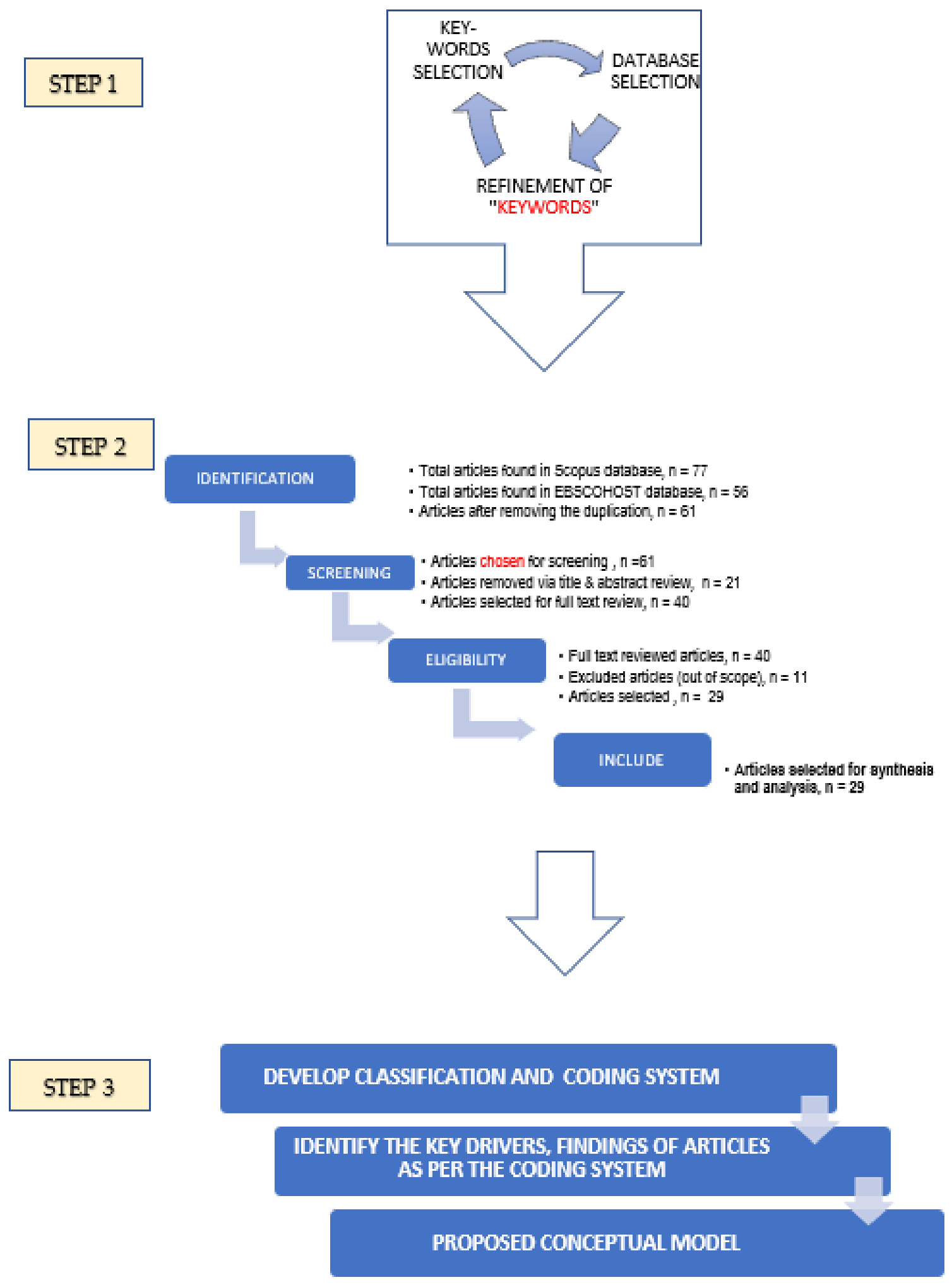
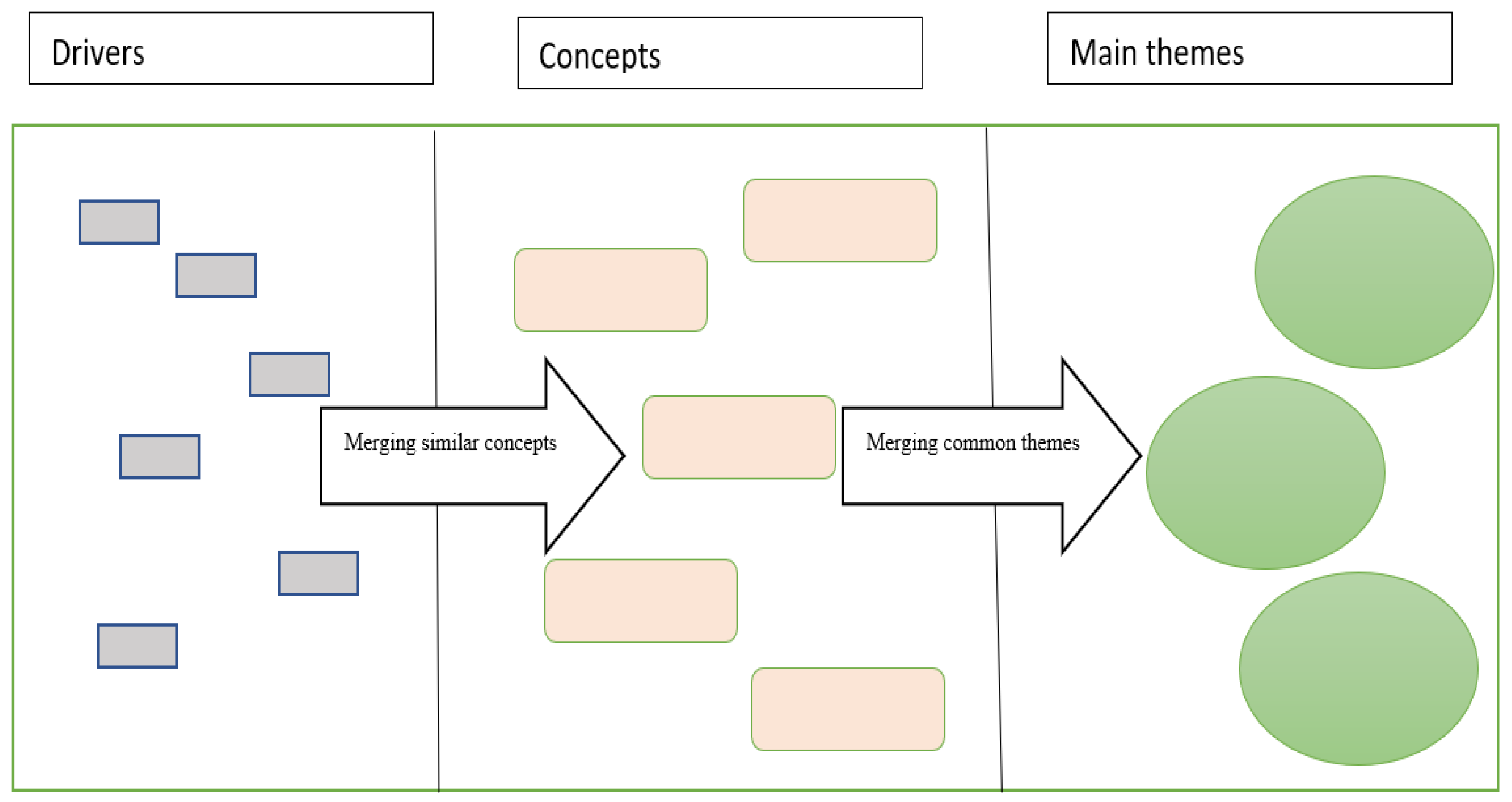
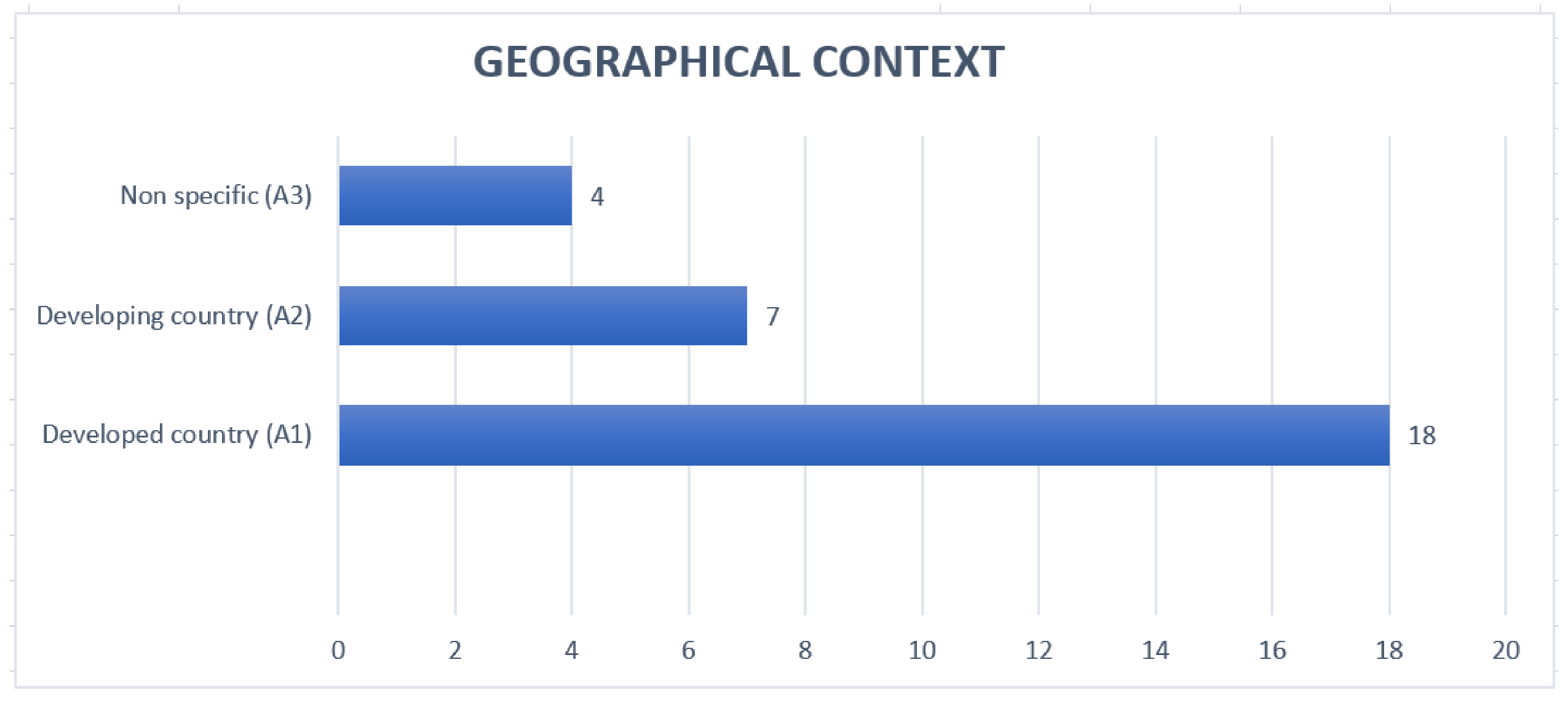
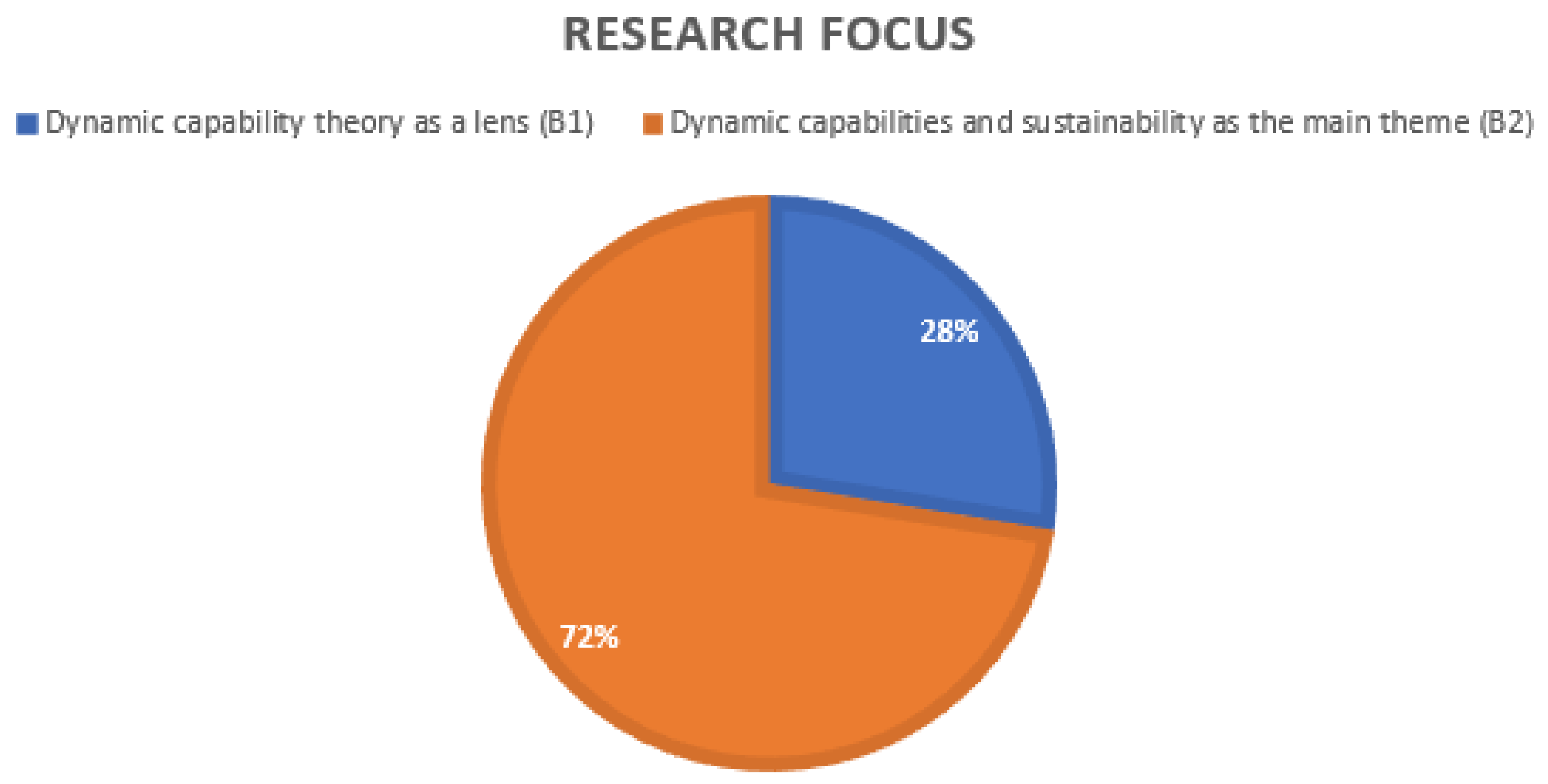
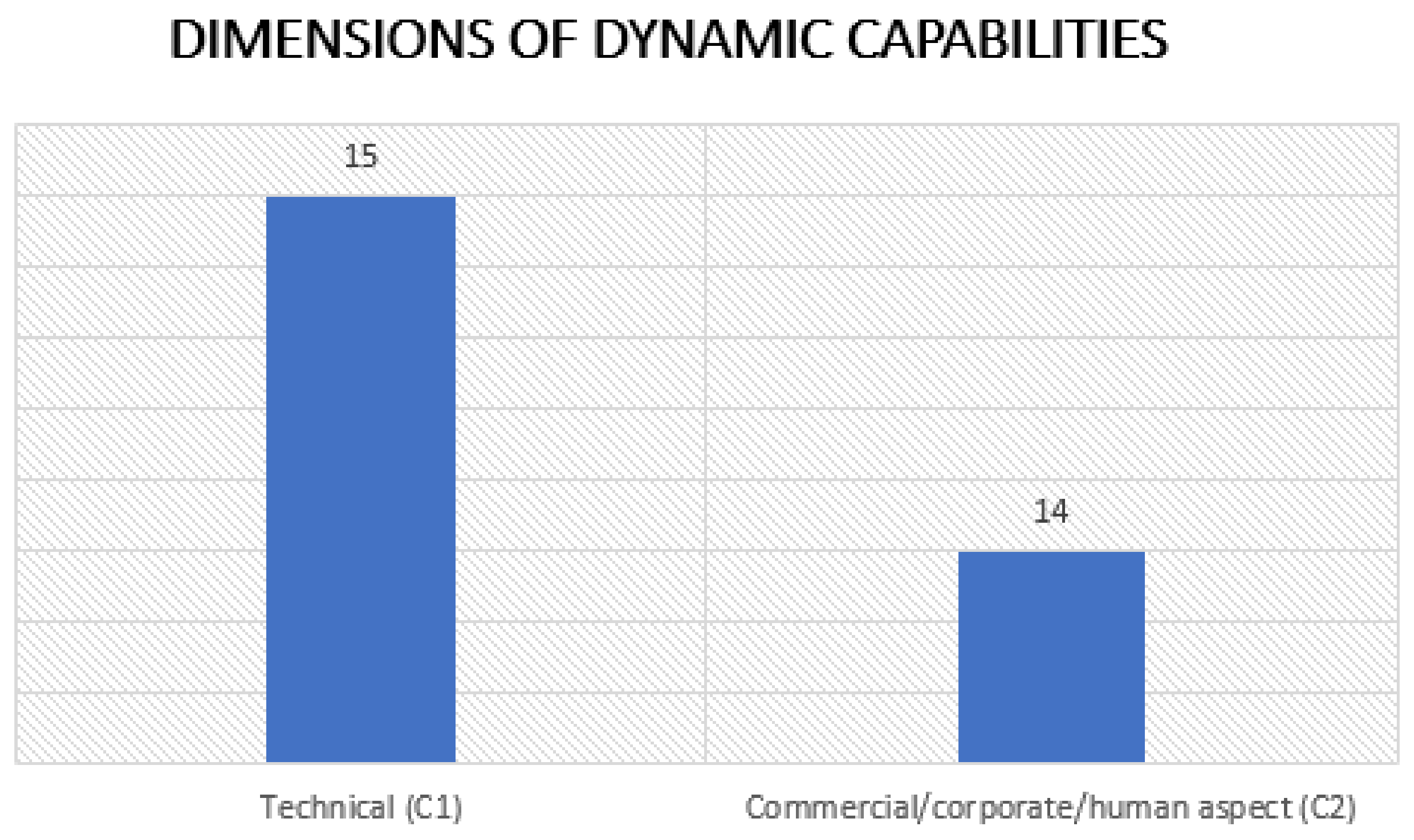
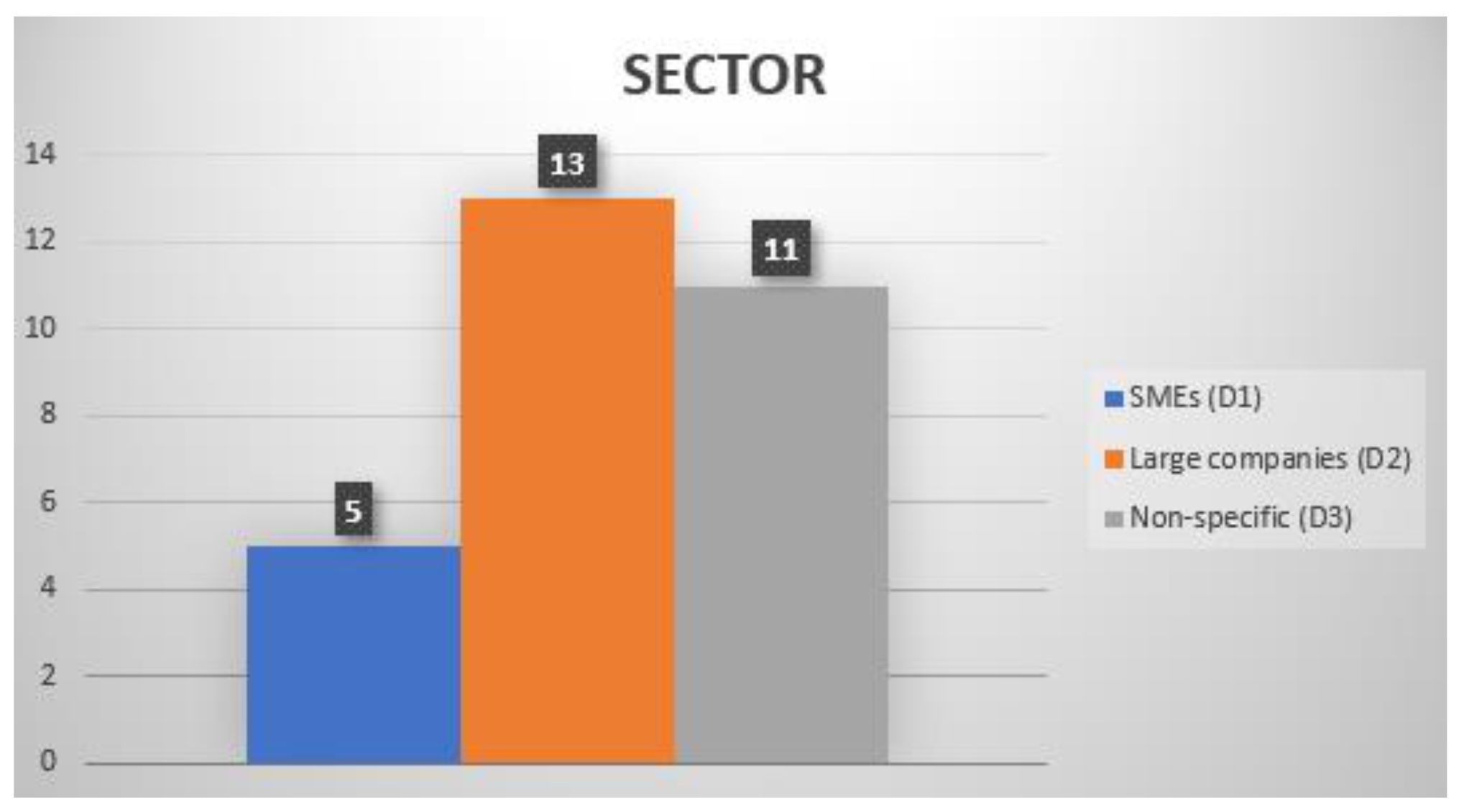
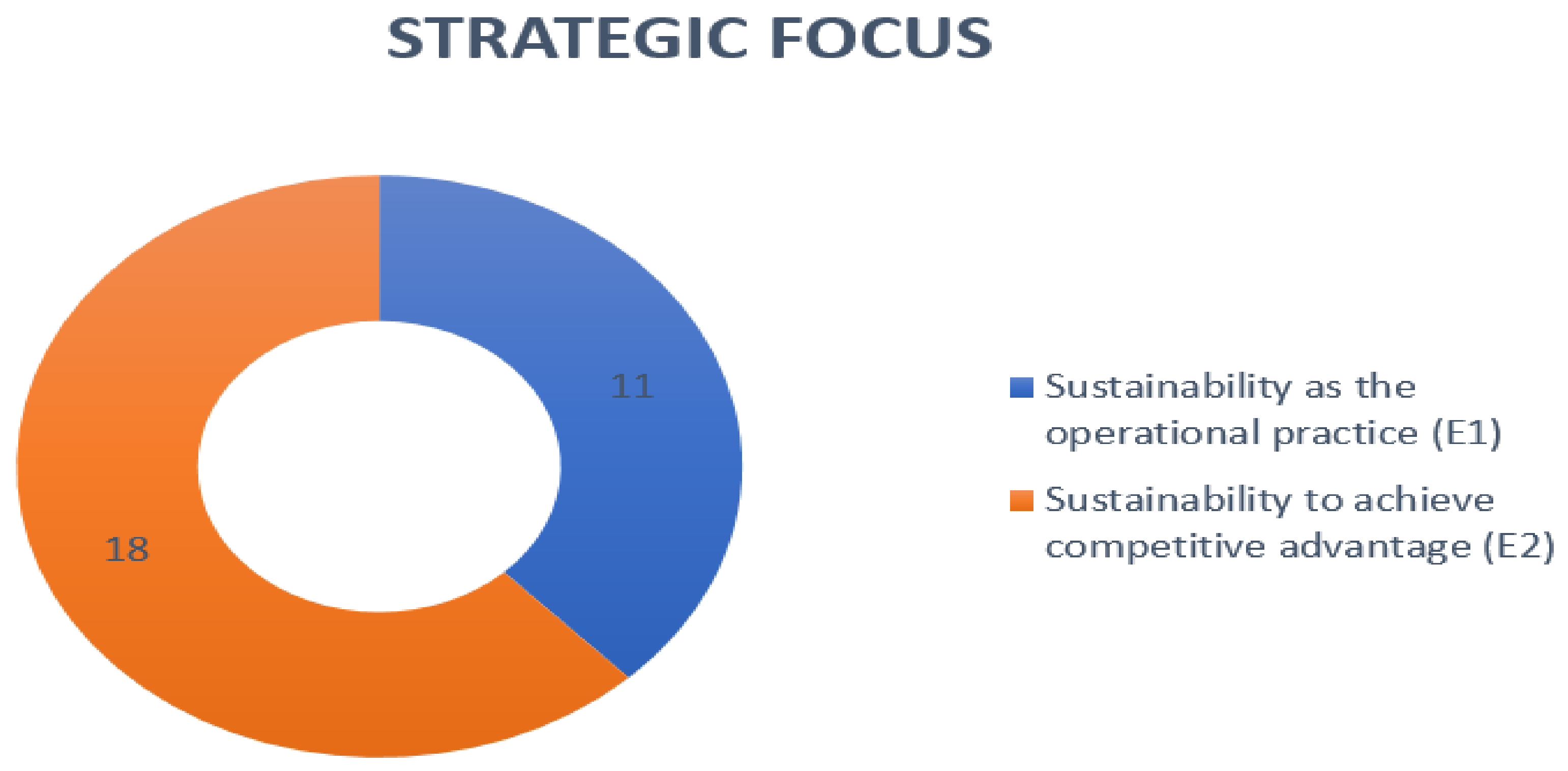
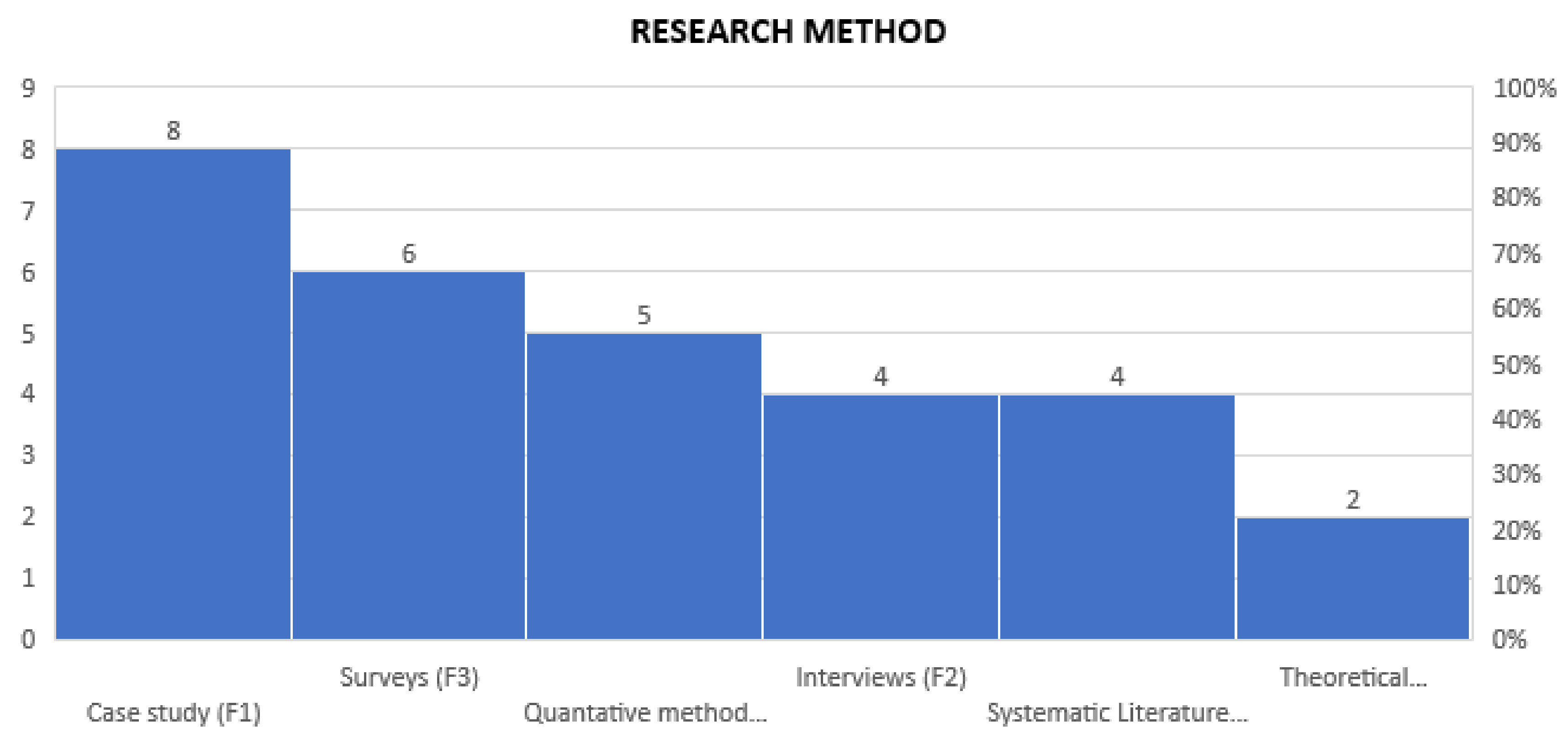

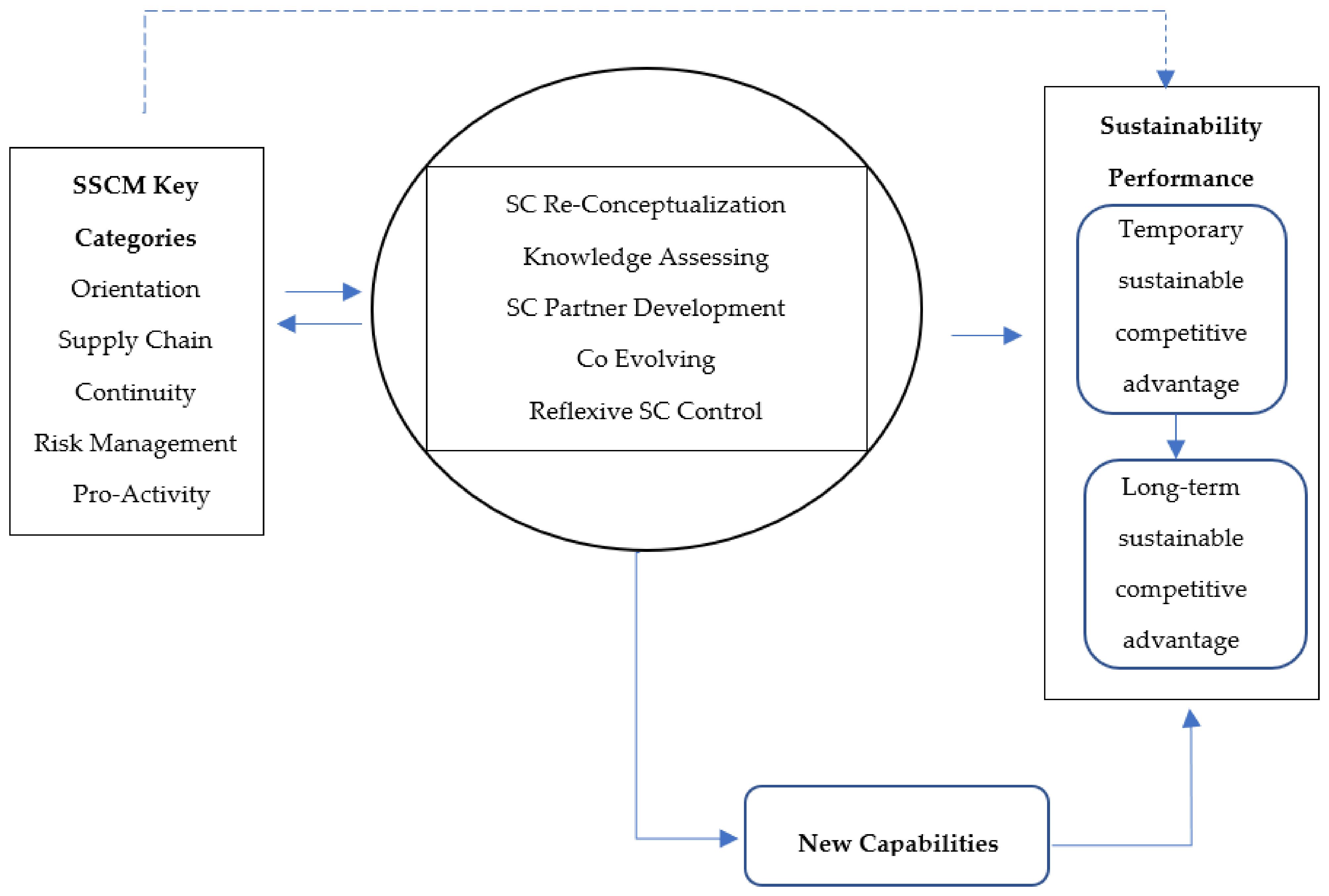

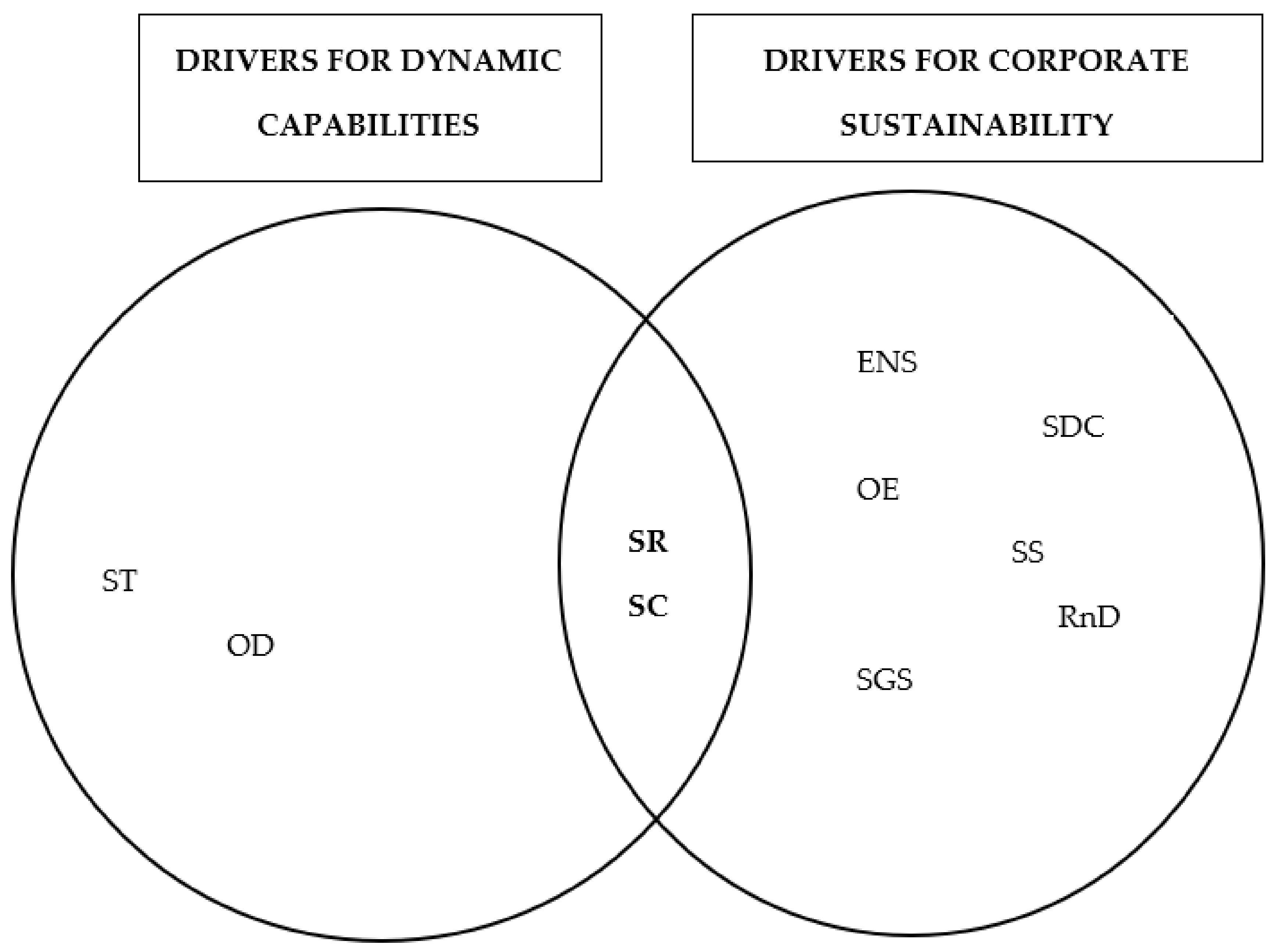
| Classification | Codes | |
|---|---|---|
| Geographical context | Developed country | A1 |
| Developing country | A2 | |
| Research focus | Dynamic capability theory as the lens | B1 |
| Dynamic capabilities and sustainability as the main theme | B2 | |
| Dimensions of dynamic capabilities | Technical | C1 |
| Commercial (human aspects) | C2 | |
| Sector | SMEs | D1 |
| Large companies | D2 | |
| Strategic focus | Sustainability as the operational practice | E1 |
| Sustainability to achieve competitive advantage | E2 | |
| Research method | Case study | F1 |
| Interviews | F2 | |
| Surveys | F3 | |
| Theoretical | F4 |
| Main Themes | Merging Concepts | Drivers |
|---|---|---|
| Continuous proactivity as per changing business landscape | Increased monitoring, sensing, and seizing routines [39,42,49,51,54] |
| Reconfiguring functional capabilities [35,39] | ||
| Reconfiguring resources [26,39,49] | ||
| Monitoring emerging sustainability needs [35] | ||
| Seizing and capturing sustainable opportunities [35,57] | ||
| Organizational structure reconfiguration [56] | ||
| Implementing creative integration [26] | ||
| Build incremental capabilities [49] | ||
| Enhanced renewing, regenerative, and absorptive capabilities [39,49] | ||
| Acquiring new knowledge [40,53,57] | ||
| Assimilate and exploit new insights [40,55] | ||
| Enhanced innovation activities and routines | Collaborative innovation [41,46,53] | |
| Enabling innovation structure and organizational routines [46,54] | ||
| Production innovation [34,49] | ||
| Developing eco-capability | Green initiatives and practices [57] | |
| Green innovation and management [12,45,53] | ||
| Green marketing [55] | ||
| Ecologically-oriented products and processes [36,53] | ||
| Eco-effectiveness, remapping, and reaping capabilities [36] | ||
| Focusing on eco-centric competitive advantage [4,36,53] | ||
| Increased stakeholder engagement | Balancing stakeholder value [46,48] |
| Alliance and partnership with stakeholders [34,41,42,48,49,53,54] | ||
| Addressing internal and external stakeholder challenges [35,56] | ||
| Capitalizing on stakeholder knowledge and engagement [41,49,53,57] | ||
| Co-evolving and partnership development [48,49,53] | ||
| Trustworthy relationships [41,53] | ||
| Multi-stakeholder enterprise model [58] Exchange of information with internal and external stakeholders [41,47,53,58] | ||
| Integrating and leveraging resources [26] | ||
| Qualitative partner control and auditing [48] | ||
| Optimized supply chain | Supply chain visibility [52] | |
| Increased supplier modular design [52] | ||
| Supply chain flexibility and agility [52] | ||
| Supply chain integration and reconfiguration [48,52] | ||
| Sustainability focused initiatives | Valuing business sustainability [46] |
| Sustainable development [54] | ||
| Push for corporate sustainability [54,57] | ||
| Sustainability oriented innovations [41] | ||
| Sustainable processes and products [40] | ||
| Ecological sustainability [36] | ||
| Corporate social responsibility (CSR) [42] | ||
| Environmental systems management and routines | Circular economy [57] | |
| Environmental proactivity [45] | ||
| Implementing environment management systems (ISO, etc.) [57] | ||
| Compliance with environmental regulations [41] | ||
| Pollution prevention [43,53] | ||
| Clean technologies [43] | ||
| Environmentally oriented innovation [43] | ||
| Recycling technologies [53] | ||
| Sustainable operational excellence | Product stewardship [56] | |
| Continuous process improvement [43] | ||
| Better service innovation [42] | ||
| Enhanced service delivery [42] | ||
| Product traceability [48,56] | ||
| New resource development [53] | ||
| Better resource allocation [12] | ||
| Innovative research and development (R&D) | Technological developments [41,56,57] | |
| Adoption of advanced technology [34] | ||
| R&D intensity [44] | ||
| Technological integration [41,48] | ||
| Organizational learning | People capability development [45,46,53] |
| Human resources learning and development [42,57] | ||
| Higher-order corporate learning [45,53,57] | ||
| Knowledge assessment [48,57] | ||
| Cognitive and learning of top management [42] | ||
| Business model innovations | Embracing ambiguity [46] | |
| Global connectedness and internationalization [41,44,53,57] | ||
| Ambidexterity [50] | ||
| Leveraging on uncertainties and complexities [41,42] | ||
| Evolutionary changes [41] | ||
| Uncertainty mitigation and risk management [41,42] | ||
| Reduce organizational slack [41] | ||
| Develop marketing capabilities [42] | ||
| Better brand management [41] | ||
| Strategic planning and corporate governance | Strategic top management commitment [42,57] | |
| Capital management [41] | ||
| Alternation in firm’s leadership [49] | ||
| Company’s rate of adoption [49,57] | ||
| Strategic organizational dynamics [39,41,47,49,53,54] | ||
| Aligning firm’s strategic orientation [47] | ||
| Cross-functional coordination [33] | ||
| Change management [53] | ||
| Collaborative organizational culture [53] |
| Main Themes | Merging Concepts | Drivers |
|---|---|---|
| Environmentally-driven innovations | Environmental sustainability innovation [4,33,37,39,40,41,53] |
| Green innovation strategy | Green innovation [4,12,33,37,40,41,45] | |
| Green supply chain [33,38] | ||
| Green human resources [26,42,55] | ||
| Green environmental management [34] | ||
| Green marketing [55] | ||
| Green corporate strategy [33,40] | ||
| Environmental compliance requirements | Environmental regulations [26,33,34,40,43,47] | |
| Pollution prevention [33,43,53] | ||
| Ecological sustainable development | Ecological sustainability [36] | |
| Eco-efficiency [36,43] | ||
| Eco-design capabilities [4,12,37] | ||
| Eco-innovation [12,26,36,38,40,41] | ||
| Environmental management strategy | Environment management strategy [26,33,39] | |
| Implementation of environmental management systems [26,38,39,49,57] | ||
| Environmental regulations [33,47] | ||
| Waste management and recycling | Water conservation [33] | |
| Circular economy [26,40,47,53,55] | ||
| Dematerialization [40,43] | ||
| Business process re-engineering | Sustainable business model innovations (SMBIs) [39,46,49] |
| Corporate sustainability strategy | Corporate sustainable development [12,33,36,43,47,53,54] | |
| Corporate sustainability performance [12,33,34,43,47,50,51] | ||
| Change in the management practices [36,39] | ||
| Firm’s DNA, ideology, and societal engagement [33,36,39] | ||
| Corporate synergies beyond regulatory compliance, sustainability networking, and leadership [39,43,52,53] | ||
| Learning and cognitive competence of top management [42,49,55] | ||
| Organizational restructuring [42,55] | ||
| Resource co-specialization strategy [39,40,47] | ||
| Social entrepreneurship [33,43] | ||
| A systematic approach toward society [49] | ||
| Top management commitment | Organizational agility [44] | |
| Organizational learning [38,39,45,53,55] | ||
| Corporate culture [33,38,39,53] | ||
| Strategic commitment [38,49,55] | ||
| Ambidexterity strategy [50,55] | ||
| Dynamic capabilities development | Capacity to sense, seize, reconfigure, and collaborate [12,33,39,40,41,42,43,45,46,47,49,51,52,56,57] |
| Green dynamic capabilities [12,36,39,40,41,49,55] | ||
| Overcoming internal and external stakeholder challenges [4,12,33,35,39,40,43,46,47,49,56] | ||
| Sustainability market orientation [12,40,41,43,44,49,55,57] | ||
| Stakeholder management | Push sustainability agenda to internal and external stakeholders [33,40,43,47,56] |
| Multi-stakeholder enterprise model [34,36,39,40,42,43,44,49,58] | ||
| Exchange of communication between internal and external resources [33,34,36,43,56] | ||
| Trustworthy relationship with stakeholders [33,39,40,44,47,49,53] | ||
| Partnership diversity [39] | ||
| Supply chain management and optimization | Strategic supply chain collaborations [33,52,53,56] |
| Supply chain optimization and increased supplier modular design [52,56] | ||
| Sustainable supply chain management [4,12,33] | ||
| Improved supply chain management decision-making (Medina-Serrano 2019) [56] | ||
| Process and product optimization | Life cycle analysis (LCA) of products and processes [41,48,52,55] |
| Product stewardship [41,43,52] | ||
| Operational optimization [33,40,52,53] | ||
| Technological innovation | Technological push [26,38,40,42,43,44,55] |
| Research and development (R&D) intensity [4,38,40,43,44,53,55] | ||
| Service innovation [40,42,55] | ||
| Collaboration among R&D stakeholders [33,38,42] | ||
| Internationalization and global business strategy | Globalization and internal interconnectivity [43,44,47,50,53,57] |
| Sustainability-oriented marketing management | Sustainability-oriented product branding and market valuation [33,44,49] |
| Drivers | Codes | Large Corp (D1) | SMEs (D2) | Developed Countries (A1) | Developing Countries (A2) |
|---|---|---|---|---|---|
| Strategic routines and competencies | SR | Very high impact | Medium impact | High impact | Medium impact |
| Integrated value chains | SC | Very high impact | High impact | High impact | High impact |
| Sustainability oriented transformations | ST | Very high impact | Medium impact | Very high impact | Medium impact |
| Strategic organizational development | OD | High impact | Very high impact | High impact | Very high impact |
| Drivers | Codes | Large Corp (D1) | SMEs (D2) | Developed Countries (A1) | Developing Countries (A2) |
|---|---|---|---|---|---|
| Environmental-oriented sustainability | ENS | Very high impact | Medium impact | Very high impact | Medium impact |
| Sustainable strategic management | SR | Very high impact | Medium impact | High impact | High impact |
| Sustainable dynamic capabilities | SDC | Very high impact | Very high impact | Very high impact | Very high impact |
| Stakeholder-centric strategic approach | SS | Very high impact | Medium impact | Very high impact | High impact |
| Sustainable supply chain management | SC | Very high impact | Very high impact | Very high impact | Very high impact |
| Operations excellence | OE | Very high impact | Medium impact | Very high impact | Medium impact |
| Sustainable R&D | R&D | Very high impact | Medium impact | Very high impact | Medium impact |
| Sustainability-oriented global business strategy | SGS | Very high impact | Medium impact | Very high impact | Medium impact |
Publisher’s Note: MDPI stays neutral with regard to jurisdictional claims in published maps and institutional affiliations. |
© 2022 by the authors. Licensee MDPI, Basel, Switzerland. This article is an open access article distributed under the terms and conditions of the Creative Commons Attribution (CC BY) license (https://creativecommons.org/licenses/by/4.0/).
Share and Cite
Bari, N.; Chimhundu, R.; Chan, K.-C. Dynamic Capabilities to Achieve Corporate Sustainability: A Roadmap to Sustained Competitive Advantage. Sustainability 2022, 14, 1531. https://doi.org/10.3390/su14031531
Bari N, Chimhundu R, Chan K-C. Dynamic Capabilities to Achieve Corporate Sustainability: A Roadmap to Sustained Competitive Advantage. Sustainability. 2022; 14(3):1531. https://doi.org/10.3390/su14031531
Chicago/Turabian StyleBari, Nadeem, Ranga Chimhundu, and Ka-Ching Chan. 2022. "Dynamic Capabilities to Achieve Corporate Sustainability: A Roadmap to Sustained Competitive Advantage" Sustainability 14, no. 3: 1531. https://doi.org/10.3390/su14031531
APA StyleBari, N., Chimhundu, R., & Chan, K.-C. (2022). Dynamic Capabilities to Achieve Corporate Sustainability: A Roadmap to Sustained Competitive Advantage. Sustainability, 14(3), 1531. https://doi.org/10.3390/su14031531








